Design
-
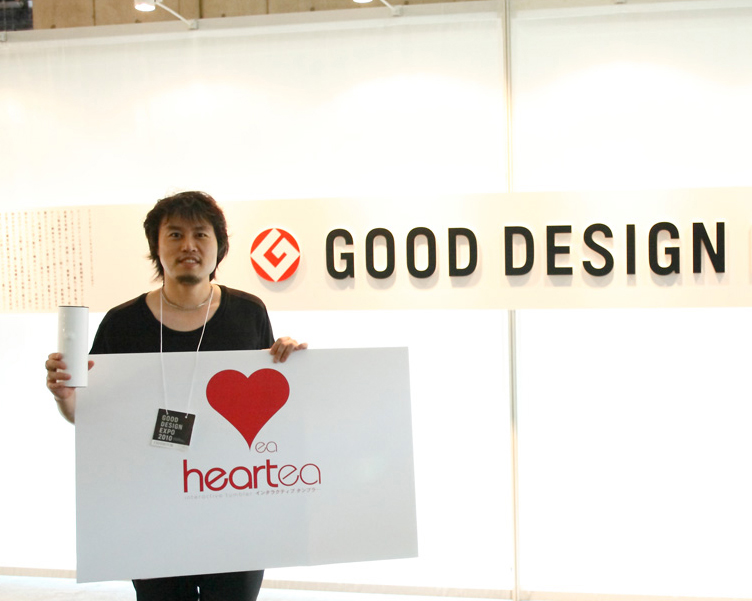 Professor Bae of Industrial Design Wins Good Design Award.
Professor Bae Sang Min’s research team of the Industrial Design Department received a G-Mark on the Product Design Section from the Good Design Awards 2010 organized by the Japan Industrial Design Promotion Organization through the exhibition of a Green Sharing Project, Heartea.
Heartea is a tumbler that allows the user to easily know the temperature of the liquid contained inside. Heartea is a name that combines Heart and Tea to refer to a tumbler that contains heart-warming tea.
Heartea was designed and produced by Professor Bae’s research team and was funded by GS Caltex. World Vision selected charity targets and oversaw distribution, and all of the sales income (about 200 million won) was donated as a scholarship to teenagers with financial difficulties.
The project has begun in 2006, and its accumulative sales are 1.7 billion won. Twenty million won is donated to 147 teenagers every year as scholarship, and through annual sharing camp, social leaders mentor teenagers to help them achieve their dreams.
The Good Design Award organized annually by Japan Industrial Design Promotion Organization has a fifty year tradition and is one of the world’s top four design contests with 6,000 submissions from 50 different countries participated.
Professor Bae’s team has won three of the top four design contests including the German Red Dot Product Award and the American IDEA Product Award.
Along with Heartea, both of foldable MP3 in 2008 and natural humidifier Lovepot in 2009 won an award from these four contests.
“Through continuous research, I hope to create the world’s best philanthropy design research center to help Third World countries and the neglected. I want to participate in creating a better world through design,” said Professor Bae.
2010.11.05 View 13765
Professor Bae of Industrial Design Wins Good Design Award.
Professor Bae Sang Min’s research team of the Industrial Design Department received a G-Mark on the Product Design Section from the Good Design Awards 2010 organized by the Japan Industrial Design Promotion Organization through the exhibition of a Green Sharing Project, Heartea.
Heartea is a tumbler that allows the user to easily know the temperature of the liquid contained inside. Heartea is a name that combines Heart and Tea to refer to a tumbler that contains heart-warming tea.
Heartea was designed and produced by Professor Bae’s research team and was funded by GS Caltex. World Vision selected charity targets and oversaw distribution, and all of the sales income (about 200 million won) was donated as a scholarship to teenagers with financial difficulties.
The project has begun in 2006, and its accumulative sales are 1.7 billion won. Twenty million won is donated to 147 teenagers every year as scholarship, and through annual sharing camp, social leaders mentor teenagers to help them achieve their dreams.
The Good Design Award organized annually by Japan Industrial Design Promotion Organization has a fifty year tradition and is one of the world’s top four design contests with 6,000 submissions from 50 different countries participated.
Professor Bae’s team has won three of the top four design contests including the German Red Dot Product Award and the American IDEA Product Award.
Along with Heartea, both of foldable MP3 in 2008 and natural humidifier Lovepot in 2009 won an award from these four contests.
“Through continuous research, I hope to create the world’s best philanthropy design research center to help Third World countries and the neglected. I want to participate in creating a better world through design,” said Professor Bae.
2010.11.05 View 13765 -
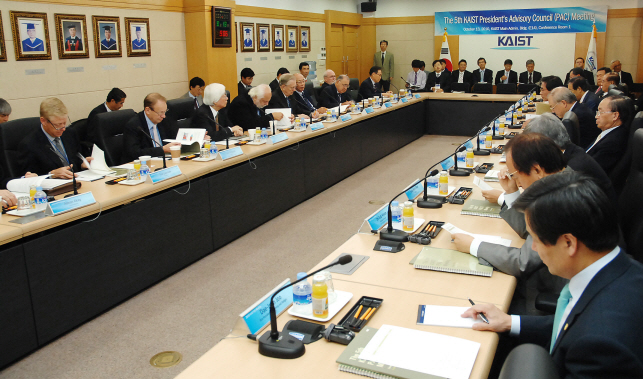 The 5th KAIST President's Advisory Council Held
The 5th KAIST President’s Advisory Council (PAC) was held on October 13 at KAIST. At PAC, President Suh reported important present conditions and achievements of KAIST and introduced the ‘KAIST Vision 2025’ to members of the council which includes top national and international professionals of the Industry-University-Institute collaboration.
Additionally, six latest research assignments of KAIST were selected and presented to the PAC. President Suh also presented the Freshman Design Course, Renaissance Ph.D. Program, KAIST-KUSTAR Cooperation Program, and the visions of Neil Pappalardo Medical Center and received advice from the council.
Through PAC, KAIST receives various strategic advices to develop KAIST into a global science and technology university, direct and indirect support on the KAIST development fund collection, and support to create, maintain and develop cooperation relationships with national and international distinguished institutes linked to advisory council members.
International PAC council members include Donald C. W. Kim, CEO of AMKOR A&E; Neil Pappalardo, former MEDITECH CEO; John R. Holzrichter, President of the Fannie and John Hertz Foundation; Papken Der Torossian, CEO of Vistec Semiconductor Systems Group; Adnan Akay, Vice President of Bilkent University; Arden Bement, Director of the National Science Foundation (NSF); Tod Laursen, President of KUSTAR in the UAE; Lars Pallesen, President of the Technical University of Denmark and Hiroyuki Yoshikawa, former President of the University of Tokyo.
National PAC council members include Kim Woo Sik, President of the Creativity Engineering Institute; Jin Hyun Kim, Chairman of the Committee for the Establishment of the National Museum of Korean Contemporary History; Myung Ja Kim, President of the Green Korea 21 Forum; Lee Hee Gook, President of LG Siltron; Lyu keun Chul, Professor of Bauman Moscow State Technical University; Bo-Young Kang, President of Andong Medical Group; Kwon Oh-Gap, former Vice Minister of Science and Technology; Sang chun Lee, President of Korea Institute of Machinery & Materials; and Bae Soo Hoon, Director of the Museum of Contemporary Art, Korea.
2010.10.20 View 15841
The 5th KAIST President's Advisory Council Held
The 5th KAIST President’s Advisory Council (PAC) was held on October 13 at KAIST. At PAC, President Suh reported important present conditions and achievements of KAIST and introduced the ‘KAIST Vision 2025’ to members of the council which includes top national and international professionals of the Industry-University-Institute collaboration.
Additionally, six latest research assignments of KAIST were selected and presented to the PAC. President Suh also presented the Freshman Design Course, Renaissance Ph.D. Program, KAIST-KUSTAR Cooperation Program, and the visions of Neil Pappalardo Medical Center and received advice from the council.
Through PAC, KAIST receives various strategic advices to develop KAIST into a global science and technology university, direct and indirect support on the KAIST development fund collection, and support to create, maintain and develop cooperation relationships with national and international distinguished institutes linked to advisory council members.
International PAC council members include Donald C. W. Kim, CEO of AMKOR A&E; Neil Pappalardo, former MEDITECH CEO; John R. Holzrichter, President of the Fannie and John Hertz Foundation; Papken Der Torossian, CEO of Vistec Semiconductor Systems Group; Adnan Akay, Vice President of Bilkent University; Arden Bement, Director of the National Science Foundation (NSF); Tod Laursen, President of KUSTAR in the UAE; Lars Pallesen, President of the Technical University of Denmark and Hiroyuki Yoshikawa, former President of the University of Tokyo.
National PAC council members include Kim Woo Sik, President of the Creativity Engineering Institute; Jin Hyun Kim, Chairman of the Committee for the Establishment of the National Museum of Korean Contemporary History; Myung Ja Kim, President of the Green Korea 21 Forum; Lee Hee Gook, President of LG Siltron; Lyu keun Chul, Professor of Bauman Moscow State Technical University; Bo-Young Kang, President of Andong Medical Group; Kwon Oh-Gap, former Vice Minister of Science and Technology; Sang chun Lee, President of Korea Institute of Machinery & Materials; and Bae Soo Hoon, Director of the Museum of Contemporary Art, Korea.
2010.10.20 View 15841 -
 The 9th International Conference on Entertainment Computing Held, Sep 8-11, 2010
The cyber world is no longer an unrealistic place for a contemporary man who spends most of his time in front of a computer nowadays. The entertainment contents industry, which materializes the cyber world, leads the new knowledge economy and is emerging as a new growth engine for high value-added industry.
Professionals in entertainment computing gathered to discuss how to make the cyber space more elaborate and entertaining. The 9th 2010 International Conference on Entertainment Computing (ICEC) was held from September 8 to September 11 at Seoul COEX by KAIST and International Federation for Information Processing (IFIP).
This year’s theme is “Creative and Innovative Science, Computing and Design for Digital and Entertainment Contents in 21C”, with fifteen global leaders of industry-university-institute collaboration speakers including George Joblove (Executive VP of Sony Pictures Technologies), Massimiliano Gasparri (VP of Warner Bros. Advanced Digital Services), Don Marinelli (Executive Producer of Entertainment Technology Center at University of Carnegie Mellon), Keith Devlin (Founding Executive Director of Stanford Media-X and Executive Director of Stanford H-STAR), Roy Ascott (President of Planetary Collegium).
Speeches, paper sessions, workshops, exhibitions on the high-tech digital entertainment industry including computer graphics, cyber reality, telepresence, 3D/4D, mobile games, animation, special effects, robot design, content production and distribution, media art were held at the conference this year.
This event was sponsored by IEEE, ACM, IPS, ADADA, Elsevier, ETRI, SK Telecom, KIISE, KMMS, HCI Korea, KCGS and KCGS.
2010.09.17 View 15667
The 9th International Conference on Entertainment Computing Held, Sep 8-11, 2010
The cyber world is no longer an unrealistic place for a contemporary man who spends most of his time in front of a computer nowadays. The entertainment contents industry, which materializes the cyber world, leads the new knowledge economy and is emerging as a new growth engine for high value-added industry.
Professionals in entertainment computing gathered to discuss how to make the cyber space more elaborate and entertaining. The 9th 2010 International Conference on Entertainment Computing (ICEC) was held from September 8 to September 11 at Seoul COEX by KAIST and International Federation for Information Processing (IFIP).
This year’s theme is “Creative and Innovative Science, Computing and Design for Digital and Entertainment Contents in 21C”, with fifteen global leaders of industry-university-institute collaboration speakers including George Joblove (Executive VP of Sony Pictures Technologies), Massimiliano Gasparri (VP of Warner Bros. Advanced Digital Services), Don Marinelli (Executive Producer of Entertainment Technology Center at University of Carnegie Mellon), Keith Devlin (Founding Executive Director of Stanford Media-X and Executive Director of Stanford H-STAR), Roy Ascott (President of Planetary Collegium).
Speeches, paper sessions, workshops, exhibitions on the high-tech digital entertainment industry including computer graphics, cyber reality, telepresence, 3D/4D, mobile games, animation, special effects, robot design, content production and distribution, media art were held at the conference this year.
This event was sponsored by IEEE, ACM, IPS, ADADA, Elsevier, ETRI, SK Telecom, KIISE, KMMS, HCI Korea, KCGS and KCGS.
2010.09.17 View 15667 -
 A graduate-level education for working professionals in science programs and exhibitions will be available from mid-August this year.
The Graduate School of Culture Technology (GSCT), KAIST, has created a new course for professionals who purse their career in science programs and exhibitions, which will start on August 19 and continue through the end of November 2010. The course will be held at Digital Media City in Seoul.
The course, also co-sponsored by National Science Museum, will offer students tuition-free opportunities to brush up their knowledge on the administration, policy, culture, technology, planning, contents development, and technology & design development, of science programs and exhibitions. Such subjects as science contents, interaction exhibitions, and utilization of new media will be studied and discussed during the course. Students will also have a class that is interactive, engaging, and visual, as well as provides hands-on learning activities.
A total of 30 candidates will be chosen for the course. Eligible applicants are graduates with a B.S. degree in the relevant filed, science program designers and exhibitors, curators for science and engineering museums, and policy planners for public and private science development programs.
2010.08.12 View 13943
A graduate-level education for working professionals in science programs and exhibitions will be available from mid-August this year.
The Graduate School of Culture Technology (GSCT), KAIST, has created a new course for professionals who purse their career in science programs and exhibitions, which will start on August 19 and continue through the end of November 2010. The course will be held at Digital Media City in Seoul.
The course, also co-sponsored by National Science Museum, will offer students tuition-free opportunities to brush up their knowledge on the administration, policy, culture, technology, planning, contents development, and technology & design development, of science programs and exhibitions. Such subjects as science contents, interaction exhibitions, and utilization of new media will be studied and discussed during the course. Students will also have a class that is interactive, engaging, and visual, as well as provides hands-on learning activities.
A total of 30 candidates will be chosen for the course. Eligible applicants are graduates with a B.S. degree in the relevant filed, science program designers and exhibitors, curators for science and engineering museums, and policy planners for public and private science development programs.
2010.08.12 View 13943 -
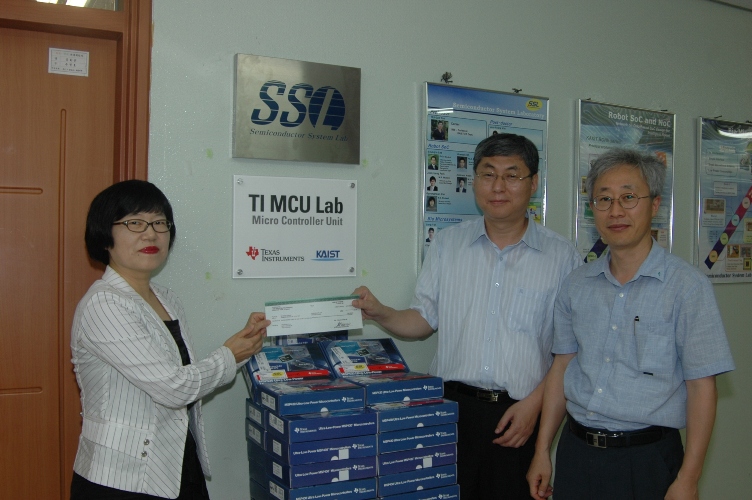 Texas Instruments, Inc. Agreed for Collaborative Research with Professor Hai-Joon Yoo, the Electrical Engineering Department of KAIST
Professor Hai-Joon Yoo from the Electrical Engineering Department of KAIST made a research collaboration agreement with Texas Instruments (TI), Inc. in July 2010 to develop a “Many-core Processor Chip,” a chip that is designed to emulate a human brain.
TI, Inc. is an American company based in Dallas, Texas and renowned for developing and commercializing semiconductor and computer technology. The company is the 4th largest manufacturer of semiconductors worldwide, 2nd supplier of chips for cellular handsets, and 1st producer of digital signal processors and analog semiconductors, among a wide range of semiconductor products.
TI, Inc. has designated Professor Yoo’s lab as one of its official labs and promised to give financial supports for the lab—it has pledged to donate a total value of 300 million won of research fund and equipment to Professor Yoo. On July 21, 2010, the signboard hanging ceremony for the designation of a TI Lab was held at Professor Yoo’s lab.
Professor Yoo developed a neuro-circuit network to emulate a human brain by adopting a mixed mode circuit that has chips for analog and digital circuits. He then has conducted a research to graft the mixed mode circuit onto a Many-core Processor to integrate the human intelligence into a conventional single-core processor that can process one instruction at a time. The Many-core Processor, once developed, can be applied to various kinds of products such as an artificial intelligence surveillance camera, robot, smart car, and the like.
Professor Yoo has presented his research results at numerous international meetings and conferences, among other things, the International Solid-State Circuits Conference (ISSCC), a global forum sponsored by the Institute of Electrical and Electronics Engineers (IEEE) for presentation of advances in solid-state circuits and Systems-on-a-Chip. The Conference offers a unique opportunity for engineers working at the cutting edge of IC design to maintain technical currency, and to network with leading experts.
Professor Yoo is a senior member of IEEE and Chairman of ISSCC in Asia.
2010.08.05 View 14072
Texas Instruments, Inc. Agreed for Collaborative Research with Professor Hai-Joon Yoo, the Electrical Engineering Department of KAIST
Professor Hai-Joon Yoo from the Electrical Engineering Department of KAIST made a research collaboration agreement with Texas Instruments (TI), Inc. in July 2010 to develop a “Many-core Processor Chip,” a chip that is designed to emulate a human brain.
TI, Inc. is an American company based in Dallas, Texas and renowned for developing and commercializing semiconductor and computer technology. The company is the 4th largest manufacturer of semiconductors worldwide, 2nd supplier of chips for cellular handsets, and 1st producer of digital signal processors and analog semiconductors, among a wide range of semiconductor products.
TI, Inc. has designated Professor Yoo’s lab as one of its official labs and promised to give financial supports for the lab—it has pledged to donate a total value of 300 million won of research fund and equipment to Professor Yoo. On July 21, 2010, the signboard hanging ceremony for the designation of a TI Lab was held at Professor Yoo’s lab.
Professor Yoo developed a neuro-circuit network to emulate a human brain by adopting a mixed mode circuit that has chips for analog and digital circuits. He then has conducted a research to graft the mixed mode circuit onto a Many-core Processor to integrate the human intelligence into a conventional single-core processor that can process one instruction at a time. The Many-core Processor, once developed, can be applied to various kinds of products such as an artificial intelligence surveillance camera, robot, smart car, and the like.
Professor Yoo has presented his research results at numerous international meetings and conferences, among other things, the International Solid-State Circuits Conference (ISSCC), a global forum sponsored by the Institute of Electrical and Electronics Engineers (IEEE) for presentation of advances in solid-state circuits and Systems-on-a-Chip. The Conference offers a unique opportunity for engineers working at the cutting edge of IC design to maintain technical currency, and to network with leading experts.
Professor Yoo is a senior member of IEEE and Chairman of ISSCC in Asia.
2010.08.05 View 14072 -
 KAIST Wins Official Membership of ERCIS
The Center for Software Policy Study of KAIST has recently become the 20th official member of the European Research Center for Information Systems (ERCIS) by signing an agreement with the organization, university authorities said on Thursday (Oct. 22).
The ERCIS is a network of scientists who conduct cooperative research in the field of integrated information systems development and organizational design. The Center undertakes interdisciplinary research with the participation of computer scientists, business management experts and law scholars.
KAIST will seek to activate exchange of professors, research fellows and graduate students with ERCIS members, as well as implementing credit exchange and dual degree programs.
ERCIS, was first organized by the German state of North Rhine-Westfahlia, is currently managed by the University of Muenster, a global leader in the field of information systems and business administration. Joining the ERCIS are one university each from New Zealand, the Netherlands, Germany, Russia, Liechtenstein, the United States, Switzerland, Spain, Slovenia, Ireland, Britain, Austria, Italy, the Czech Republic, Poland, France, Finland and Australia.
KAIST"s Center for Software Policy Study is currently preparing for the establishment of a support system for developers of the mobile application software as part of the EUREKA project. Korea is playing a leading role in this project on the strength of its competitiveness in the mobile phone industry.
EUREKA is a pan-European intergovernmental network for market-oriented, industrial R&D aimed at enhancing European competitiveness through its support to businesses, research centers and universities who carry out pan-European projects to develop innovative products, processes and services.
2009.10.22 View 15053
KAIST Wins Official Membership of ERCIS
The Center for Software Policy Study of KAIST has recently become the 20th official member of the European Research Center for Information Systems (ERCIS) by signing an agreement with the organization, university authorities said on Thursday (Oct. 22).
The ERCIS is a network of scientists who conduct cooperative research in the field of integrated information systems development and organizational design. The Center undertakes interdisciplinary research with the participation of computer scientists, business management experts and law scholars.
KAIST will seek to activate exchange of professors, research fellows and graduate students with ERCIS members, as well as implementing credit exchange and dual degree programs.
ERCIS, was first organized by the German state of North Rhine-Westfahlia, is currently managed by the University of Muenster, a global leader in the field of information systems and business administration. Joining the ERCIS are one university each from New Zealand, the Netherlands, Germany, Russia, Liechtenstein, the United States, Switzerland, Spain, Slovenia, Ireland, Britain, Austria, Italy, the Czech Republic, Poland, France, Finland and Australia.
KAIST"s Center for Software Policy Study is currently preparing for the establishment of a support system for developers of the mobile application software as part of the EUREKA project. Korea is playing a leading role in this project on the strength of its competitiveness in the mobile phone industry.
EUREKA is a pan-European intergovernmental network for market-oriented, industrial R&D aimed at enhancing European competitiveness through its support to businesses, research centers and universities who carry out pan-European projects to develop innovative products, processes and services.
2009.10.22 View 15053 -
 KAIST's Industrial Design Program Rated among World's Best
KAIST"s master"s program in the area of industrial design has been rated among the world"s best in the latest survey of the World"s Best Design Programs published in the Oct. 2, 2009 issue of BusinessWeek, university authorities said Wednesday, Oct. 7.
The magazine has selected 30 top design programs at the postgraduate level from all over the world. Only six programs in Asia -- one each in Korea, Japan, China, Hong Kong, Taiwan and India -- were included in the list, while famous design schools in the United States and Europe dominated the list.
Why was KAIST on the list? The magazine commented: "The master"s program, set up in 1991, focuses on human-centered design, technology convergence, and business innovation. Students take courses in design marketing and design management to understand wider corporate issues and also learn how to use design as a strategic tool."
In presenting the list of top design programs, the magazine said that "students in these programs take classes in art, management and science, for example, and create projects in multi-disciplinary teams with students from other schools, They aim to use design for strategy rather than merely for aesthetics and may find jobs as design managers, researchers or business consultants." The magazine concluded that "these programs have formally established hybrid curricula."
Meanwhile, Woo-sung Park, a KAIST graduate, has been chosen among the "Twenty-one People Who Will Change Business" surveyed by the magazine. After graduating with a B.S. in industrial design from KAIST in 2005, Park worked for a design firm for two years. He then returned to KAIST to develop the analytical skills he now uses at the global consultancy Boston Consulting Group in Seoul.
2009.10.09 View 12710
KAIST's Industrial Design Program Rated among World's Best
KAIST"s master"s program in the area of industrial design has been rated among the world"s best in the latest survey of the World"s Best Design Programs published in the Oct. 2, 2009 issue of BusinessWeek, university authorities said Wednesday, Oct. 7.
The magazine has selected 30 top design programs at the postgraduate level from all over the world. Only six programs in Asia -- one each in Korea, Japan, China, Hong Kong, Taiwan and India -- were included in the list, while famous design schools in the United States and Europe dominated the list.
Why was KAIST on the list? The magazine commented: "The master"s program, set up in 1991, focuses on human-centered design, technology convergence, and business innovation. Students take courses in design marketing and design management to understand wider corporate issues and also learn how to use design as a strategic tool."
In presenting the list of top design programs, the magazine said that "students in these programs take classes in art, management and science, for example, and create projects in multi-disciplinary teams with students from other schools, They aim to use design for strategy rather than merely for aesthetics and may find jobs as design managers, researchers or business consultants." The magazine concluded that "these programs have formally established hybrid curricula."
Meanwhile, Woo-sung Park, a KAIST graduate, has been chosen among the "Twenty-one People Who Will Change Business" surveyed by the magazine. After graduating with a B.S. in industrial design from KAIST in 2005, Park worked for a design firm for two years. He then returned to KAIST to develop the analytical skills he now uses at the global consultancy Boston Consulting Group in Seoul.
2009.10.09 View 12710 -
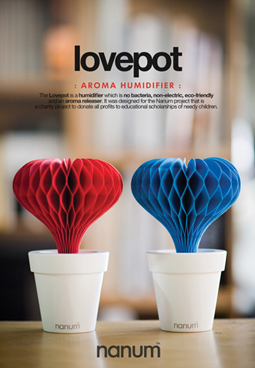 Bae's Design Team Wins Good Design Award
An eco-friendly pot humidifier designed by a KAIST team led by Prof. Sang-Min Bae of the Department of Industrial Design won the G-Mark award at the 2009 Good Design Award, university authorities said on Tuesday (Sept. 29).
The Good Design Award is a Japanese comprehensive design evaluation and commendation system operated by the Japan Industrial Design Promotion Organization (JIDPO). It originated from the Good Design Selection system, known as the "G-Mark System," instituted by the Ministry of International Trade and Industry of Japan in 1957. More than 1,000 companies and designers from 50-odd countries submit about 3,000 entries for consideration for the Good Design Awards each year.
The humidifier controls the indoor humidity by natural vaporization using the tissue ball. The tissue ball is made of honeycomb shaped felt so that it can enhance water absorbing ability with large surface. In the package of the pot, there is a bottle of aroma liquid and people can use it for the fragrances as well as humidification.
The pot, called "Love Pot," was designed for the Nanum (Sharing) Project, a charity activity to establish funds for donations through new products development. International aid organization World Vision, oil company GS Caltex and Prof. Bae"s ID+IM design laboratory have teamed up for the project.
The KAIST team worked for free to design the pot. Profits from the sale of the pots were donated for education programs for low-income households. Among the products made under the Nanum Project was a cross cube MP3 player which won the silver prize at the 2008 International Design Excellence Awards (IDEA). IDEA is one of the world"s top three design awards along with Germany"s International Forum DEsign Awards and the Red Dot Design Awards.
Prof. Bae"s team also won the "Best of the Best" award at Red Dot last November with the "Roly Poly Pot," a planter that tips to the side when the plant is thirsty.
2009.10.01 View 13915
Bae's Design Team Wins Good Design Award
An eco-friendly pot humidifier designed by a KAIST team led by Prof. Sang-Min Bae of the Department of Industrial Design won the G-Mark award at the 2009 Good Design Award, university authorities said on Tuesday (Sept. 29).
The Good Design Award is a Japanese comprehensive design evaluation and commendation system operated by the Japan Industrial Design Promotion Organization (JIDPO). It originated from the Good Design Selection system, known as the "G-Mark System," instituted by the Ministry of International Trade and Industry of Japan in 1957. More than 1,000 companies and designers from 50-odd countries submit about 3,000 entries for consideration for the Good Design Awards each year.
The humidifier controls the indoor humidity by natural vaporization using the tissue ball. The tissue ball is made of honeycomb shaped felt so that it can enhance water absorbing ability with large surface. In the package of the pot, there is a bottle of aroma liquid and people can use it for the fragrances as well as humidification.
The pot, called "Love Pot," was designed for the Nanum (Sharing) Project, a charity activity to establish funds for donations through new products development. International aid organization World Vision, oil company GS Caltex and Prof. Bae"s ID+IM design laboratory have teamed up for the project.
The KAIST team worked for free to design the pot. Profits from the sale of the pots were donated for education programs for low-income households. Among the products made under the Nanum Project was a cross cube MP3 player which won the silver prize at the 2008 International Design Excellence Awards (IDEA). IDEA is one of the world"s top three design awards along with Germany"s International Forum DEsign Awards and the Red Dot Design Awards.
Prof. Bae"s team also won the "Best of the Best" award at Red Dot last November with the "Roly Poly Pot," a planter that tips to the side when the plant is thirsty.
2009.10.01 View 13915 -
 KAIST Undergraduates Open Four-Day International Conference
The ICISTS-KAIST, an annual international conference organized by KAIST undergraduate students, opened on Thursday (Aug. 20) at the KAIST"s main campus in Daejeon.
The 2009 ICISTS (International Conference for the Integration of Science and Technology into Society) drew around 200 experts and students from 44 countries. Since its inception in 2005 to promote discourse on important science and technology issues affecting modern society, the conference has served as an opportunity for academic networking among students in various parts of the world.
The four-day conference consists of lectures, open discussions among lecturers and students, field trips to help students to understand actual applications, and team projects.
This year"s conference offers three workshops under the themes of "Climate Change: Merging Technology and Policy for Green Solutions"; "Human-Computer Interaction: Designing Computer System for Intuitive Human Access"; and "Nano Clinic: Breakthrough in Conquering Disease."
Lectures by invited experts in various scientific fields will help broaden students" perspectives particularly from interdisciplinary viewpoints, said an organizer of the conference.
2009.08.28 View 17345
KAIST Undergraduates Open Four-Day International Conference
The ICISTS-KAIST, an annual international conference organized by KAIST undergraduate students, opened on Thursday (Aug. 20) at the KAIST"s main campus in Daejeon.
The 2009 ICISTS (International Conference for the Integration of Science and Technology into Society) drew around 200 experts and students from 44 countries. Since its inception in 2005 to promote discourse on important science and technology issues affecting modern society, the conference has served as an opportunity for academic networking among students in various parts of the world.
The four-day conference consists of lectures, open discussions among lecturers and students, field trips to help students to understand actual applications, and team projects.
This year"s conference offers three workshops under the themes of "Climate Change: Merging Technology and Policy for Green Solutions"; "Human-Computer Interaction: Designing Computer System for Intuitive Human Access"; and "Nano Clinic: Breakthrough in Conquering Disease."
Lectures by invited experts in various scientific fields will help broaden students" perspectives particularly from interdisciplinary viewpoints, said an organizer of the conference.
2009.08.28 View 17345 -
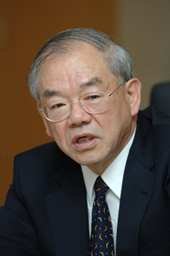 KAIST President Suh Honored with 2009 ASME Medal
KAIST President Nam-Pyo Suh has chosen as the 2009 winner of the ASME Medal presented by the American Society of Mechanical Engineers, university authorities said on Thursday (July 2).
President Suh received the honor for "seminal contributions to the advancement of engineering through research in tribology, polymer processing, metal processing, design and manufacturing, as well as contributions to engineering education and research infrastructure."
The selection of President Suh was unanimously approved by the 13-member Board of Governors of the ASME. Suh became the first scientist of Asian descent in the award"s 89-year-long history.
Founded in 1880, the ASME is a non-profit professional organization promoting the art, science and practice of mechanical and multidisciplinary engineering and allied sciences. The organization is known for setting codes and standards for mechanical devices. As of 2009, it has 120,000 members worldwide.
Only one ASME medal is awarded annually to recognize "eminently distinguished achievement." The award consists of a $17,000 honorarium, a gold medal, certificate and travel supplement for two days. It will be presented to President Suh during the 2009 International Mechanical Engineering Congress and Exposition, which will be held in Lake Buena Vista, Florida, November 13-10, 2009.
President Suh is an internationally known educator, engineer and inventor. Born in Korea, he immigrated to the U.S. in 1954 to join his father, who was teaching at Harvard. He earned both his bachelor"s and master"s degrees from MIT before coming to Carnegie Tech for his doctoral education in mechanical engineering.
While teaching at MIT, he founded the MIT-Industry Polymer Processing Program in 1973 and the Laboratory for Manufacturing and Productivity. He left these positions in 1984 to serve with the U.S. National Science Foundation as its assistant director for engineering, until 1988.
He invented many new materials, products and manufacturing processes, earning more than 60 U. S. patents and founding several companies. He has written seven books and more than 300 scholarly papers. Among dozens of honors throughout his career, President Suh most recently received the 2007 Lifetime Achievement from the Society of Plastics Engineers.
The ASME conducts one of the world"s largest technical publishing operations through its ASME Press, holds numerous technical conferences and hundreds of professional development courses each year, and sponsors numerous outreach and educational programs.
2009.07.02 View 15419
KAIST President Suh Honored with 2009 ASME Medal
KAIST President Nam-Pyo Suh has chosen as the 2009 winner of the ASME Medal presented by the American Society of Mechanical Engineers, university authorities said on Thursday (July 2).
President Suh received the honor for "seminal contributions to the advancement of engineering through research in tribology, polymer processing, metal processing, design and manufacturing, as well as contributions to engineering education and research infrastructure."
The selection of President Suh was unanimously approved by the 13-member Board of Governors of the ASME. Suh became the first scientist of Asian descent in the award"s 89-year-long history.
Founded in 1880, the ASME is a non-profit professional organization promoting the art, science and practice of mechanical and multidisciplinary engineering and allied sciences. The organization is known for setting codes and standards for mechanical devices. As of 2009, it has 120,000 members worldwide.
Only one ASME medal is awarded annually to recognize "eminently distinguished achievement." The award consists of a $17,000 honorarium, a gold medal, certificate and travel supplement for two days. It will be presented to President Suh during the 2009 International Mechanical Engineering Congress and Exposition, which will be held in Lake Buena Vista, Florida, November 13-10, 2009.
President Suh is an internationally known educator, engineer and inventor. Born in Korea, he immigrated to the U.S. in 1954 to join his father, who was teaching at Harvard. He earned both his bachelor"s and master"s degrees from MIT before coming to Carnegie Tech for his doctoral education in mechanical engineering.
While teaching at MIT, he founded the MIT-Industry Polymer Processing Program in 1973 and the Laboratory for Manufacturing and Productivity. He left these positions in 1984 to serve with the U.S. National Science Foundation as its assistant director for engineering, until 1988.
He invented many new materials, products and manufacturing processes, earning more than 60 U. S. patents and founding several companies. He has written seven books and more than 300 scholarly papers. Among dozens of honors throughout his career, President Suh most recently received the 2007 Lifetime Achievement from the Society of Plastics Engineers.
The ASME conducts one of the world"s largest technical publishing operations through its ASME Press, holds numerous technical conferences and hundreds of professional development courses each year, and sponsors numerous outreach and educational programs.
2009.07.02 View 15419 -
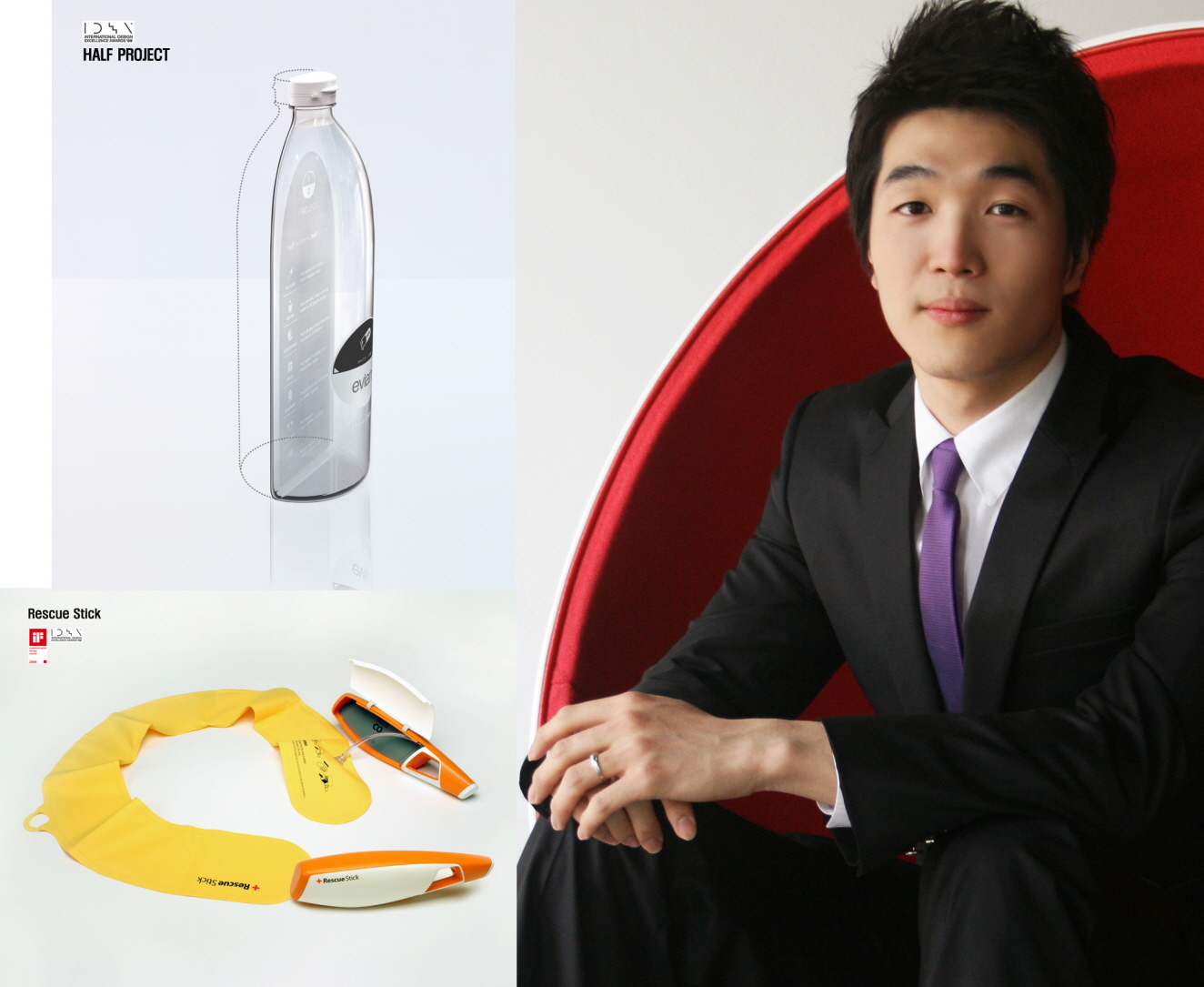 KAIST Senior Wins Prizes at International Design Contests
Sung-Joon Kim, a senior at the Department of Industrial Design, KAIST, has recently won the highest prize at the iF Communication Design Award held in Hanover, Germany, university officials said on Monday (June 3).
The prizewinning work entitled "1/2 PROJECT" introduces a donation system in which a customer buys a bottle of drink, for example, containing only a half of its price value and donate the remaining half of the value. The work which was created as part of the Samsung Design Membership was also awarded a silver prize at the International Design Excellence Awards (IDEA) of the United States.
Award ceremonies of the two prizes are scheduled for in Muenchen in August and in Miami in September, respectively.
"The design project is aimed at making donation a part of everyday life by teaming up with big-name beverage makers," said Kim.
iF Communication Design Award and the IDEA are among the world"s three leading international design competitions. The other one is the Red Dot Design Award presented in Essen, Germany.
Early this year, Kim, leading a team, presented a portable life saving equipment called "Rescue Stick" to the two competitions and won high honors.
2009.06.05 View 16188
KAIST Senior Wins Prizes at International Design Contests
Sung-Joon Kim, a senior at the Department of Industrial Design, KAIST, has recently won the highest prize at the iF Communication Design Award held in Hanover, Germany, university officials said on Monday (June 3).
The prizewinning work entitled "1/2 PROJECT" introduces a donation system in which a customer buys a bottle of drink, for example, containing only a half of its price value and donate the remaining half of the value. The work which was created as part of the Samsung Design Membership was also awarded a silver prize at the International Design Excellence Awards (IDEA) of the United States.
Award ceremonies of the two prizes are scheduled for in Muenchen in August and in Miami in September, respectively.
"The design project is aimed at making donation a part of everyday life by teaming up with big-name beverage makers," said Kim.
iF Communication Design Award and the IDEA are among the world"s three leading international design competitions. The other one is the Red Dot Design Award presented in Essen, Germany.
Early this year, Kim, leading a team, presented a portable life saving equipment called "Rescue Stick" to the two competitions and won high honors.
2009.06.05 View 16188 -
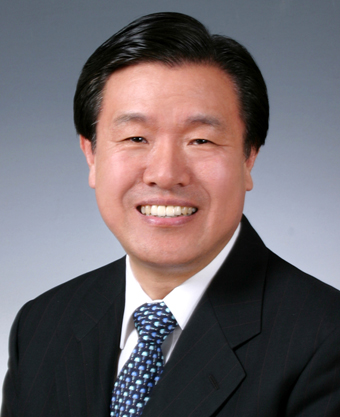 Prof. Chung Appointed Chief Design Officer of Seoul City
Prof. Kyung-Won Chung of the Department of Industrial Design, KAIST, has been appointed as the new chief design officer of the Seoul Metropolitan City, university sources said on Tuesday (May 26).
Chung succeeded Prof, Young-Gull Kwon of Seoul National University who served as the inaugural head of the design division since 2007. The deputy-mayor level position has a two-year term.
With a vision to turn Seoul into a "global design hub," the Seoul city administration established the design division and initiated a slew of initiatives including design competitions aimed at improving the city"s looks.
Prof. Chung graduated from Seoul National University and its graduate school. Then, he earned a master"s degree from Syracuse University, New York, and a doctorate from Manchester Metropolitan University in Britain. Since February 2009, he has served as an executive of the newly-created Seoul Design Foundation. He also served as president of the Korea Institute of Design Promotion (KIDP) from February 2000 through May 2003.
2009.05.28 View 10926
Prof. Chung Appointed Chief Design Officer of Seoul City
Prof. Kyung-Won Chung of the Department of Industrial Design, KAIST, has been appointed as the new chief design officer of the Seoul Metropolitan City, university sources said on Tuesday (May 26).
Chung succeeded Prof, Young-Gull Kwon of Seoul National University who served as the inaugural head of the design division since 2007. The deputy-mayor level position has a two-year term.
With a vision to turn Seoul into a "global design hub," the Seoul city administration established the design division and initiated a slew of initiatives including design competitions aimed at improving the city"s looks.
Prof. Chung graduated from Seoul National University and its graduate school. Then, he earned a master"s degree from Syracuse University, New York, and a doctorate from Manchester Metropolitan University in Britain. Since February 2009, he has served as an executive of the newly-created Seoul Design Foundation. He also served as president of the Korea Institute of Design Promotion (KIDP) from February 2000 through May 2003.
2009.05.28 View 10926